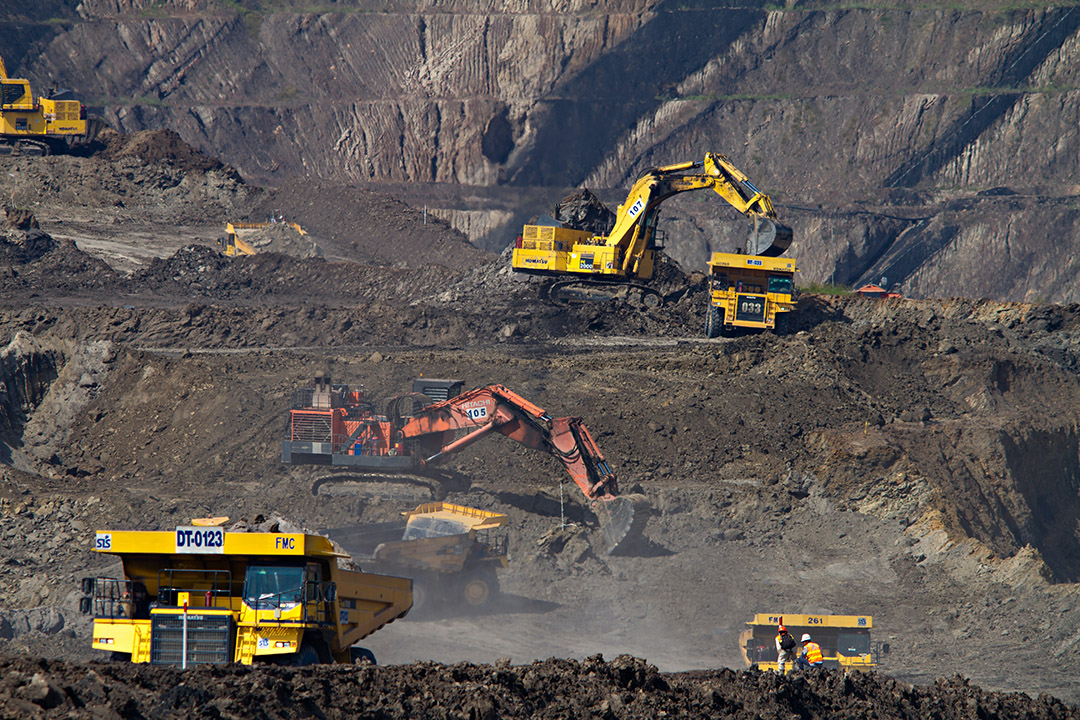

At a time of bumper dividend payouts from the likes of Rio Tinto and – presumably – BHP, most investors seeking a resources exposure would be happy to invest directly in the major producers.
Of course, the history of resources is also about endless boom-and-bust cycles - and if history doesn’t repeat it sure will rhyme. With iron ore well off the pace since its May record highs, there’s an alliterative feel already …
Short of avoiding the (arguably) toppish sector, the sprawling listed mining services sector might present a more reliable exposure, although we say ‘might’ because there are a few caveats.
As the little helpers to the miners and explorers, the mining services providers are more exposed to production and activity levels rather than commodity prices per se.
The idea is that even if iron ore prices retreat further, the Pilbara mines will continue to churn the brown stuff out.
Similarly, Queensland and NSW coal producers are on their nose because of the prevailing anti fossil fuel sentiment – but in the main they’ll continue to churn the black stuff out (including coking coal that’s used to make steel rather than burn in generators).
At the exploration and mine development end, activity levels tend to march to a different tune to prevailing commodity prices – as do the providers to these juniors.
Local investors are spoilt for choice, with no fewer than 40 mining service providers listed on the ASX.
The real challenge is to size up their relative merits, which is a herculean task given the scope of their activities: everything from exploration stage (such as drilling and blasting), mine engineering and construction and ongoing contract mining and maintenance.
Common services also include the provision of labour, explosives, lab analysis, railways and piping, cabling electrical and ventilation work.
While it’s a crowded listed sector, they still come.
On July 26, the diversified blaster and driller Aquirian (AQN) listed at a 20 per cent premium after raising $8 million in a “strongly oversubscribed” offer at 20 cents apiece (they’re now mooching around the offer price).
Initially known as Total Blasthole Solutions – and we kind of prefer this original name – the company last year generated $2.2 million of earnings before interest tax depreciation and amortisation (ebitda), on revenue of $11m.
More substantive peer DDH1 (DDH) listed in early March, having raised $150 million at $1.10 apiece.
With just over 100 rigs, DDH boasts Australia’s biggest fleet of surface drilling units.
DDH shares are trading only moderately above the issue price, despite the company in late July upping full-year ebitda expectations to $74.8 million, 8 per cent higher than the forecast prospectus number.
“The historic underinvestment in mineral exploration in Australia … has presented the opportunities that we anticipated,” CEO Sy Van Dyk says.
Broker Canaccord Genuity describes the mining services sector as being at an “interesting juncture’’- which is one way of putting it.
On the one hand, iron ore prices are still five times higher than five years ago and copper has doubled in the last year. Exploration spending is gaining pace, but is still well off the peak levels of 2012.
On the other hand, labour shortages and cost inflation pressures are starting to bite at a time when a new ute in a Perth car lot has become as rare as a WA Covid-19 case.
The WA labour problem – not to be confused with the state opposition’s Labor problem – is becoming a common narrative thread leading up to the profit results season.
Mineral Resources (MIN), which operates both iron ore and lithium mines and conducts third-party crushing, complains about a dearth of road train drivers to get its riches to port. Mind you, it didn’t stop Chris Ellison’s outfit this week reporting a stonking $1.1 billion underlying net profit, up 230 per cent.
The giant Downer EDI (DOW), which operates across mining and industrial sectors, this week alluded to labour problems beyond moving workers in and out of the Autonomous Republic of WA.
Broader mobility issues were “causing pockets of industry skill shortage and competition for experienced blue and white-collar employees.”
Fellow providers Perenti (PRN) and NRW (NWH) have voiced similar cost concerns.
Canaccord notes so-called ‘rise and fall’ clauses protect the providers from cost increases, by rebasing margins on long-term contracts according to measures such as the Australian Bureau of Statistics’ Mining Wages Index.
The trouble is, the data is three months old and cost may have increased since then (as has been the case). The numbers also may not accurately reflect the conditions felt in certain sub sectors.
Not all providers are affected to the same extent.
For example, Mader Group (MAD) avoids the crunch with its in-house labour and “flexible pricing terms”, while Boom Logistics (BOL) has a diverse mix of resources other clients.
Currently there’s more than enough work for everyone, but competition is fierce for newcomers Aquirian and DDH: the Australian Drilling Industry Alliance counts 95 local providers, including the listed Mitchell Services (MSV), Perenti and Boart Longyear (BLY).
As with the miners, mining contractors can – and do – run into strife.
The world’s biggest drilling provider, the indebted Boart Longyear fell into the hands of debt holders after conditions went pear-shaped in 2011.
A Macquarie Group spin off, Boart listed on the ASX in 2007 after a $2.3 billion IPO – the second biggest in the bourse’s history.
Investors can reduce the risks by sticking to the providers with healthy balance sheets and diversification across commodities and geographies, as well as clients.
With a specialist exposure to the global oil and gas sector, Worley Parsons (WOR) hasn’t been a favourite with the ESG purists but its shares have still gained 38 per cent over the last 12 months.
Others, such as the aforementioned $3.7 billion market cap Downer EDI have diversified across industrial activities (such as its acquired Spotless catering group).
Or how about Seven Group Holdings (SVH) with ownership of the WA Caterpillar franchise, Coates Hire, board control of Boral and 40 per cent of Seven West Media? That’s a healthy diversification you will read about … at least in the West Australian.
On Canaccord’s numbers, the sector trades at an average earnings multiple of 16 times expected earnings for the 2020-21 year, or a median 12 times. The stocks also yield a healthy average of 6.5 per yield.
Several trade on multiples of well under ten times, including equipment renter-outer Emeco (EHL), electrical services contractor GenusPlus (GNP), Macmahon (MAH), NRW, Mitchell Services and the battered MACA Ltd (MLD).
Targeting the cheap ‘uns is an obvious ploy, but in your columnist’s pained experience it’s hardly a sure-fire one.
Such is the vastness and variety of the sector, it’s impossible to come up with hard-and -fast rules about what stocks will fire and what ones will fizz.
Next week, we’ll offer the definitive solutions to Afghanistan, climate change and the Covid-19 crisis.
After all, it’s probably easier.
Tim Boreham edits The New Criterion
tim@independentresearch.com.au